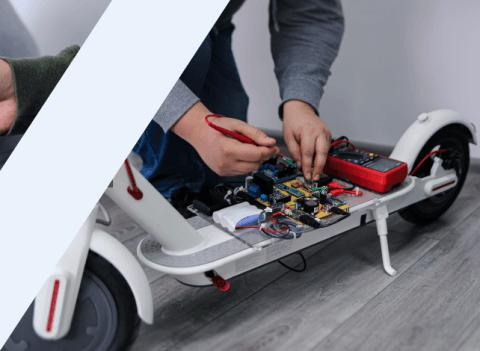
DAV IoT Platform
DAV Foundation is a blockchain-based transportation company from Switzerland. They are developing an open standard for a decentralized transportation network for autonomous vehicles including trucks, drones, cars, bikes, and more.
The challenge
DAV Foundation wanted to create an open source and easy-to-build IoT module for micro-mobility platforms. This module would help set up, configure, maintain, and track micro-mobility vehicles from the cloud.
Delivered value
We designed the device architecture, chose easily sourced hardware, wrote the firmware, and created assembly instructions — all in just over a month. The DAV IoT Platform is now available on GitHub for the general public.
The process
The very first thing we did was plan out the device architecture. This allowed our hardware and firmware engineers to work in parallel, minimizing risks and the potential for errors when choosing hardware and programming it according to the project requirements.
To make sure we selected the most appropriate hardware, our team ordered several types of components from different suppliers. The goal was to find hardware that was both durable and widely available on the market. In the end, we settled on a Raspberry Pi Zero.
As for the firmware, one of the key requirements was to write it in Python 3.7. Python is a popular and relatively simple language, which makes it easy for someone with little engineering skills to build and customize the module.
In order to securely handle telemetric data generated by the module, our team connected it to Google’s IoT Cloud via MQTT. The connection is encrypted to assure maximum data security and prevent any meddling in the network or interception of network communications.
Apart from handling telemetric data for each vehicle, Google Cloud IoT enables remote module configuration. Other DAV IoT features include remote vehicle control, theft protection, and crash reports.
How it works


The team at Lemberg Solutions did a great job working with us to refine our vision for the product and turn it into a reality. By having a dedicated point of contact and weekly online meetings, we were able to work together to bring the project to completion on time while adapting to any changes that came up — just like with an in-house team.






